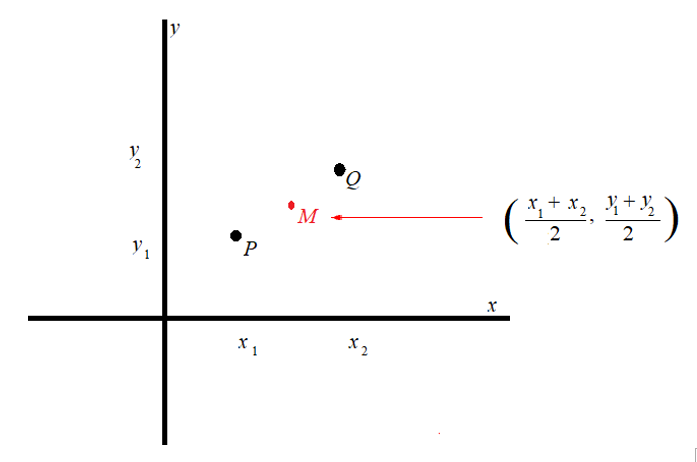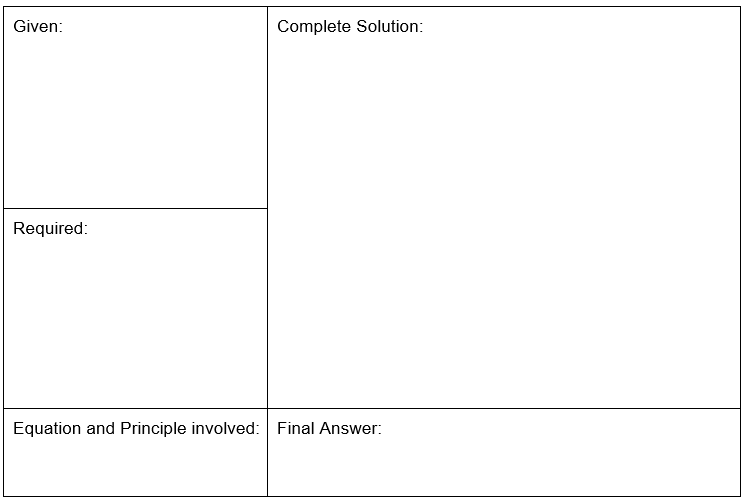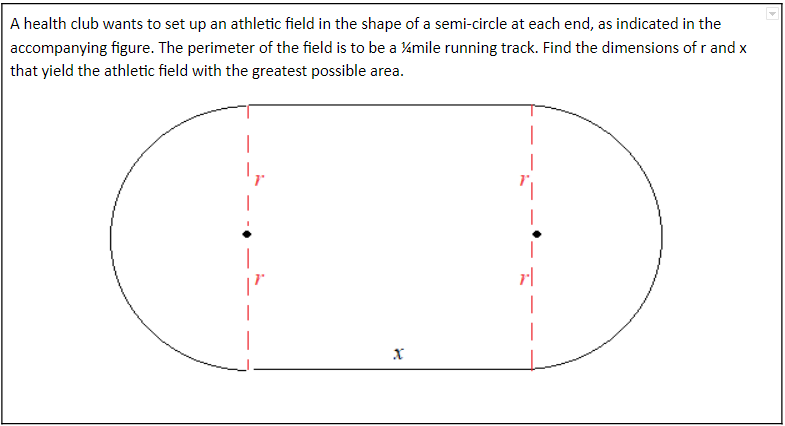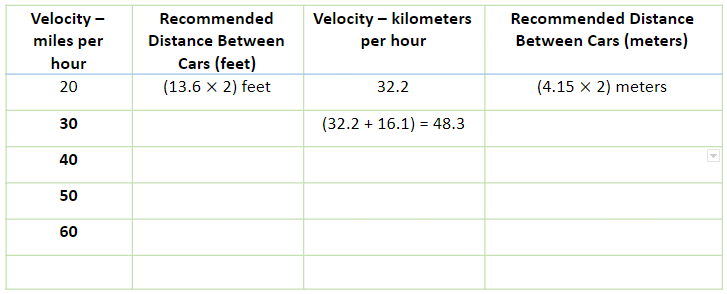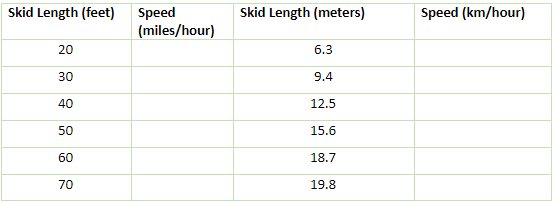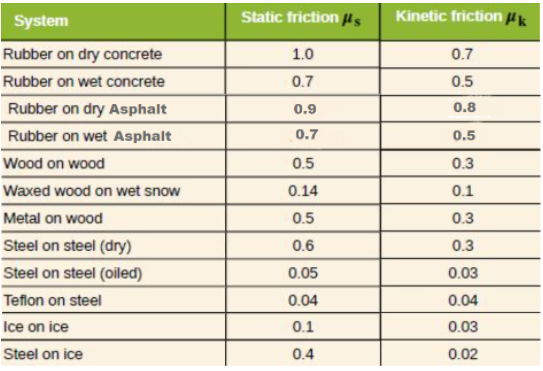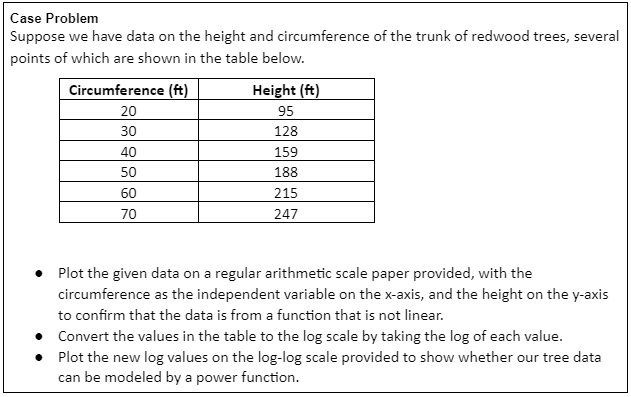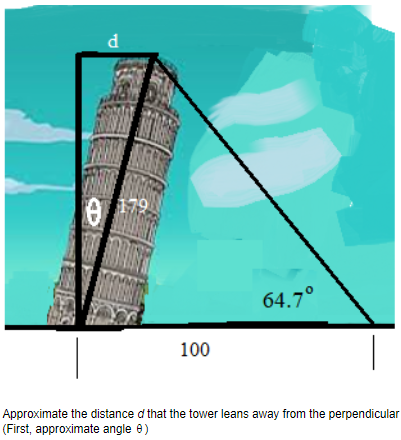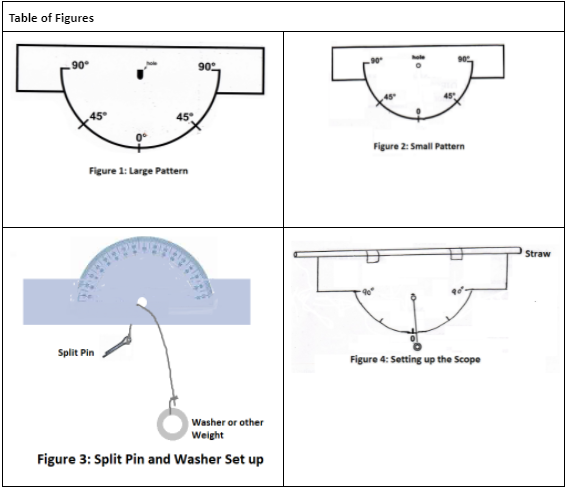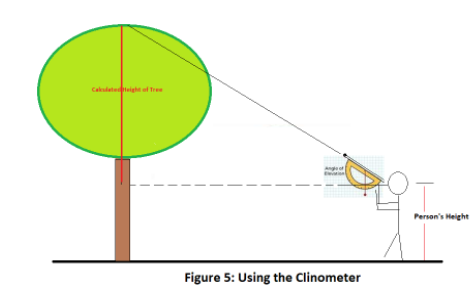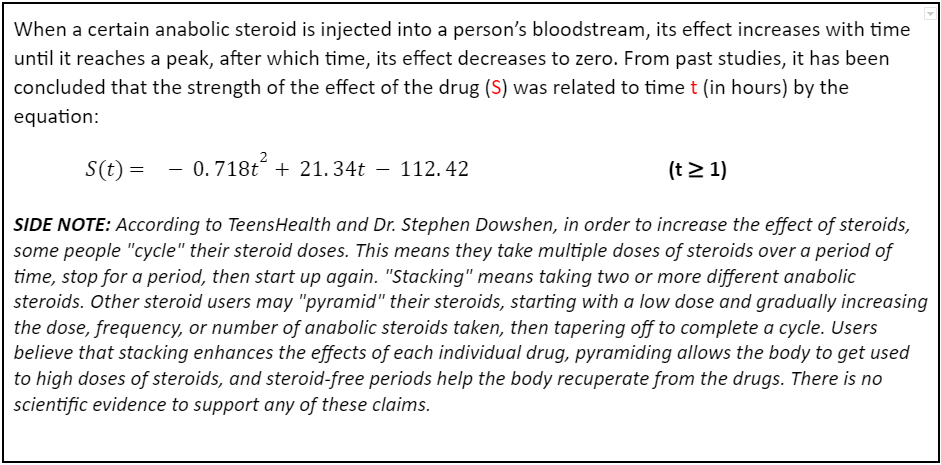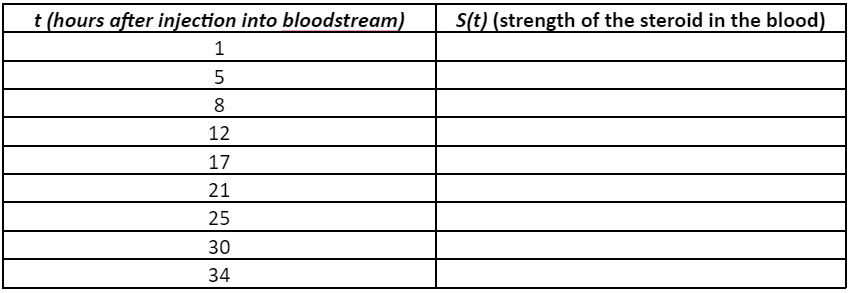-
GeneralGeneral
-
Homepage


Welcome to Intro to Algebra & Trigonometry, the first course in the Mathematics series for the Sciences Training Certificate. This course and the Certificate are designed primarily for learners interested in preparing for and gaining entry to health-related programs and to help address the prerequisites for the Medical College Admission Test (MCAT). This Intro to Algebra & Trigonometry course provides in-depth learning about general mathematical concepts and techniques in the bachelor’s-level study of natural, physical, behavioral, and social sciences. Participants can review and gain mathematical knowledge on analyzing and manipulating scientific data. The course will explore important areas of mathematics such as Arithmetic, Algebra, Geometry, Trigonometry, and Vector Algebra that can be applied in scientific inquiry.
The Intro to Algebra & Trigonometry course is partly sponsored by the International Development Research Center and the University of the Incarnate Word School of Osteopathic Medicine. Like all NextGenU.org courses, it is competency-based, using competencies based on the Association of American Medical Colleges’ Medical College Admission Test. It uses learning resources from accredited, academic, professional, and world-class organizations and universities such as Rice University. Volunteer designers for this course include Shaunik Sharma, BSc; Tristan Aaron Wild, BMSc (Hons); and the late Mohammad Asadi-Lari, a former MD-PHD Candidate at the University of Toronto. Marco Aurelio Hernandez, Ph.D., created the course.; Ma.Genikka Camille Gabral, BEd, MSc; Margaret Niles, Ph.D.; and reviewed by Prof. Sally Keely, MS, COI.
For publications on the efficacy of NextGenU.org’s courses, see NextGenU.org’s publication page.
The completion time for this course is estimated at 132 hours, comprising 35 hours of learning resources, 69 hours of studying and assimilation of the content, and 28 hours of participating in learning activities and quizzes to assist the learners in synthesizing learning materials. This course is equivalent to 3 credit hours in the U.S. undergraduate/bachelor’s degree system.
The course requires the completion of all quizzes, discussion forums, and practical activities to receive a course certificate. Practice quizzes, composed of multiple-choice questions, are available throughout the course. After you’ve completed each module, quiz, and learning activity, at the end of the course, you’ll have access to a final exam consisting of 25 multiple-choice questions, a last lab activity, and a chance to evaluate this course. Participants have up to three opportunities to take the final exam and achieve the required passing score of >=70%. Once you’ve passed the final exam and completed the evaluations, you can download a certificate of completion from NextGenU.org and our course’s co-sponsoring organizations.
We keep your personal information confidential, never sell any of your information, and only use anonymized data for research purposes. Also, we are happy to report your testing information and share your work with anyone (your school, employer, etc.) at your request.
Engaging with this Course:
This free course is aimed at students who have graduated from high school and want to prepare to become a health professional and pass the MCAT exam. You may also browse this course for free for personal enrichment; there are no requirements.
To obtain a certificate, a learner must first register for the course and then complete:
- Pre-test
- All the reading requirements,
- All quizzes and pass with 80% with unlimited attempts,
- All practical activities,
- All discussion forums,
- The final lab activity,
- The final exam with a minimum of 80% and a maximum of 3 attempts, and
- The self and course evaluation forms.
To obtain credit:
- Complete all requirements listed above for the Certificate, and
- Your learning institution or workplace should approve the partner-university-sponsored NextGenU.org course for educational credit, as they usually would for their learner taking a course anywhere.
NextGenU.org is happy to provide your institution with:
- A link to and description of the course training so they can see all of its components, including the co-sponsoring institutions;
- Your grade on the final exam;
- Your work products (e.g., discussion forum responses) and any other required or optional shared materials that you produce and authorize to share with them;
- Your evaluations -- course and self-assessments;
- A copy of your Certificate of completion with the co-sponsoring organizations listed.
To obtain a degree, NextGenU.org co-sponsors degree programs with institutional partners. To get a whole degree co-sponsored with NextGenU.org, registrants must be enrolled in a degree program as a student of a NextGenU.org institutional partner. If your institution might be interested in offering a degree with NextGenU.org, contact us.
We hope you will find this a rewarding learning experience, and we count on your assessment and feedback to help us improve this training for future students.
Here are the following steps to take the course and earn a certificate:
- Complete the registration form.
- Take the pre-test.
- Begin the course with Module 1: Real Numbers. In each lesson, read the description, complete all required readings and any required activity, and take the corresponding quizzes.
-
Module 1: Real Numbers

Competencies covered in this module:
- Basic Arithmetic; Prerequisite for Basic Algebra - Real Numbers, Fractions, Significant Digits.
- Conversion- Convert Metric to Metric, Metric to English, and perform dimensional analysis.
- Basic Arithmetic - Proportions, Ratios, Percentages.
- Exponents.
- Basic Arithmetic; Prerequisite for Basic Algebra - Real Numbers, Fractions, Significant Digits.
-
Module 1: Lesson 1: The Real Numbers
Student Learning Outcomes:
Upon completion of this lesson, you will be able to:- Describe the systems used to classify numbers.
- Explain, identify and work with mathematical expressions involving rational numbers.
- Explain and identify irrational numbers.
- Demonstrate the order of real numbers using the number line, the opposite of a real number, and the absolute value of a real number.
- Perform calculations using the order of operations.
- Define and use the properties of real numbers.
- Multiply and divide fractions.
- Add and subtract fractions.
- Perform all operations on fractions.
- Write fractions as decimals and decimals as fractions.
- Define and do operations with significant digits considerations.
- Demonstrate how decimals and fractions are used in real life.
10 URLs, 1 Forum -
Module 1: Lesson 2: The Rudiments of Measurement
Student Learning Outcomes:
Upon completion of this lesson, you will be able to:- Convert from one unit of length, weight, volume, time, and speed to another in the American (SI) System.
- Convert from one unit of length, weight, volume, and speed to another in the Metric System.
- Convert measures from American System to Metric System and vice versa.
- Use units to balance equations.
- Estimate length, distance, and other quantities.
5 URLs -
Module 1: Lesson 3: Ratio, Proportion, and Percentages
Student Learning Outcomes:
Upon completion of this lesson, you will be able to:- Solving ratio and rates problems.
- Examine the use of proportions in solving real-life problems.
- Calculate percentages of given values.
- Calculate a reverse percentage problem.
- Convert between percent, decimals, and fractions.
- Calculate percent increase or decrease.
5 URLs -
Module 1: Lesson 4: Introduction to Exponents
Student Learning Outcomes:
Upon completion of this lesson, you will be able to:- Examine the use of powers in mathematical expressions - evaluate powers.
- Use scientific notation to express very large or very small numbers.
- Simplify square roots.
- Rationalize the denominators of square root expressions.
- Estimate square roots.
4 URLs -
Module 1: Lesson 5: Working with Exponents
Student Learning Outcomes:
Upon completion of this lesson, you will be able to:- Identify the components of an expression with integer exponents.
- Perform the order of operations with exponents.
- Simplify an expression with exponents using the product and quotient rules.
- Simplify expressions using the negative and zero exponent rules.
- Simplify expressions using all the rules for exponents.
3 URLs, 1 Quiz -
Module 2: The Fundamentals of Algebra

Competency covered in this module:
- Basic Algebra.
- Graphing - Calculate Slopes from Data Found in Figures, Graphs, and Tables.
-
Module 2: Lesson 1: Algebra Expressions and Equations
Student Learning Outcomes:
Upon completion of this lesson, you will be able to:- Use variables and operators, and translate words into algebraic expressions.
- Evaluate algebraic expressions.
- Simplify algebraic expressions using the associative, commutative, and distributive properties of multiplication.
- Simplify expressions using "grouping" of like terms.
- Solve equations from algebraic expressions or words involving integers.
- Solve equations with fraction or decimal coefficients.
- Solve absolute value equations.
- Represent intervals on the number line.
- Solve linear inequalities.
- Solve linear absolute value inequalities.
Click here to start this lesson10 URLs -
Module 2: Lesson 2: Operations on Polynomials
Student Learning Outcomes:
Upon completion of this lesson, you will be able to:- Identify the degree and the leading coefficient of a polynomial.
- Add and subtract polynomials.
- Multiply polynomials.
- Perform operations on polynomials with several variables.
- Divide a polynomial by a monomial.
- Divide a polynomial by a binomial using long division or synthetic division.
- Apply operations on polynomials to real-life situations.
Click here to start this lesson5 URLs -
Module 2: Lesson 3: Factoring Polynomials
Student Learning Outcomes:
Upon completion of this lesson, you will be able to:- Factor a polynomial using the greatest common factor.
- Factor a polynomial by grouping.
- Factor perfect square trinomials.
- Factor using the difference of squares.
- Apply polynomial factoring to real-life situations.
4 URLs -
Module 2: Lesson 4: Graphing Linear Equations
Student Learning Outcomes:
Upon completion of this lesson, you will be able to:- Graph equations on the rectangular coordinate system.
- Find the distance between two points.
- Find the mid-point of a line from its equation.
- Explain what the slope of a line is, and be able to find the slope of a given line.
- Explain the connection between slope and rate of change, and find rates of change in application problems.
- Graph a linear equation.
7 URLs, 1 Forum, 1 Quiz -
Module 3: Introduction to Functions, and Systems of Linear Equations
 Competency covered in this module:
Competency covered in this module: - Introduction to Functions - Foundation for Study of Logarithmic, Exponentials, Trigonometric, and Inverse Trigonometric Functions.
- Simultaneous Equations.
-
Module 3: Lesson 1: Introduction to Functions
Student Learning Outcomes:
Upon completion of this lesson, you will be able to:- Determine whether a relation is a function.
- Evaluate a function given in tabular, algebraic, or word form.
- Find function values from a graph.
- Use the vertical and horizontal line tests to determine whether a function is one-to-one.
- Find the domain of a function from its equation.
- Find the range of a function from its equation.
- Use inequality, set builder, and interval notation to specify domain and range.
- Find domain and range from a graph.
- FInd rate of change from a tabular function.
- Work with piecewise-defined functions.
- Determine whether a function is increasing, decreasing, or constant, and find its absolute max and min by its graph.
- Identify the equation of a translated absolute value function.
- Find the inverse of a function from its equation.
Click here to start this lesson7 URLs -
Module 3: Lesson 2: Solving Systems of Linear Equations (Simultaneous Equations) in Two Variables
Student Learning Outcomes:
Upon completion of this lesson, you will be able to:- Define a system of linear equations.
- Determine whether an ordered pair is a solution to a system of Linear equations.
- Solve a system of linear equations by substitution and elimination.
- Identify an inconsistent system of linear equations.
- Express the solution to a system of dependent equations.
- Choose the most convenient method to solve a system of linear equations.
3 URLs, 1 Forum -
Module 3: Lesson 3: Applications of Systems of Equations
Student Learning Outcomes:
Upon completion of this lesson, you will be able to:- Solve Geometry applications using systems of linear equations.
- Solve mixture applications using systems of linear equations.
- Use graphs to solve a system of linear inequalities.
2 URLs, 1 Quiz -
Module 4: Quadratic, and Rational Expressions and Equations
 Competency
covered in this module:
Competency
covered in this module: - Basic Algebra.
-
Module 4: Lesson 1: Quadratic Expressions and Quadratic Equations
Student Learning Outcomes:
Upon completion of this lesson, you will be able to:- Solve quadratic equations by factoring and using the zero property.
- Solve quadratic equations by the square root property.
- Solve quadratic equations by completing the square.
- Solve quadratic equations by using the quadratic formula.
- Use the discriminant to find the nature of the solutions to a quadratic equation.
- Learn and identify characteristics of the graph of a quadratic function: the vertex, the x and y-intercepts, axis of symmetry, and translations.
- Solve equations with radicals.
- Apply the quadratic equation to problems in the medical field.
- Apply the quadratic equation to problems in other fields.
Click here to start this lesson9 URLs, 3 Forums -
Module 4: Lesson 2: Rational Expressions and Equations
Upon completion of this lesson, you will be able to:Student Learning Outcomes:
- Determine the value for which a rational expression is undefined.
- Simplify rational expressions.
- Multiply rational expressions.
- Divide rational expressions.
- Add and subtract rational expressions with a common denominator.
- Find the least common denominator and solving a rational expression with unlike denominators.
- Simplify complex rational expressions.
- Solve rational equations.
- Solve similar figures as rational equations and proportions.
- Solve direct variation problems.
- Solve inverse variation problems.
- Solve rational equations applications in physics and other fields.
9 URLs, 1 Quiz -
Module 5: Exponentials and Logarithms
 Competency covered in this module:
Competency covered in this module:
- Exponentials and Logarithms.
-
Module 5: Lesson 1: Exponential Functions
Student Learning Outcomes:
Upon completion of this lesson, you will be able to:- Identify an exponential situation by words.
- Define and identify an exponential function by its equation.
- Identify an exponential function by its graph.
- Find the domain and range of an exponential function.
- Evaluate exponential functions.
- Evaluate applications of exponential functions.
- Find the equation of an exponential function from two points when the initial value is known.
- Find the equation of an exponential function from two points when the initial value is unknown.
- Find the equation of an exponential function given its graph.
Click here to start this lesson2 URLs, 1 Forum -
Module 5: Lesson 2: Logarithms and Introduction to Logarithmic Functions
Student Learning Outcomes:
Upon completion of this lesson, you will be able to:- Define and identify an inverse function.
- Verify inverses algebraically.
- Define a logarithm function.
- Determine the domain of a logarithm function.
- Identify the graph of a logarithmic function.
- Convert a logarithmic expression to the exponential form.
- Convert an exponential expression to the logarithmic form.
- Expand and simplify logarithmic expressions using all the rules for logarithms: the product, quotient, and power rules.
- Apply logarithms.
Click here to start this lesson5 URLs -
Module 5: Lesson 3: The Log Scales
Student Learning Outcomes:
Upon completion of this lesson, you will be able to:- Explain what a semi-log plot is, and how it is used.
- Explain the difference between arithmetic and logarithmic line charts.
Click here to start this lesson4 URLs, 1 Forum, 1 Quiz -
Module 6: Fundamentals of Trigonometry
Competency covered in this module:

- Trigonometry Basics - Demonstrate a general understanding of the following trigonometric concepts: definitions of basic (sine, cosine, tangent) and inverse (sin‒1, cos‒1, tan‒1) functions; sin and cos values of 0°, 90°, and 180°; relationships between the lengths of sides of right triangles containing angles of 30°, 45°, and 60°.
-
Module 6: Lesson 1: Angles and Arcs
Student Learning Outcomes:
Upon completion of this lesson, you will be able to:
- Identify an angle drawn in the standard position.
- Identify angles by their classification as acute, obtuse, right, straight, complementary, supplementary, and conjugate.
- Convert from degrees to radians and from radians to degrees.
- Find coterminal angles to a given angle.
- Find the reference angle to a given angle.
- Find the length of an arc of a circle.
- Use the pythagorean theorem to find unknown sides of right triangles.
Click here to start this lesson6 URLs, 1 Forum - Identify an angle drawn in the standard position.
-
Module 6: Lesson 2: Introduction to Right Triangle Trigonometry
Student Learning Outcomes:
Upon completion of this lesson, you will be able to:
- Define the relationship between the two acute angles in a right angle triangle.
- Evaluate the three main and three reciprocal trigonometric functions of a right angle from a given triangle.
- Evaluate the trigonometric functions of angles not in standard positions.
- Identify the relationship between the sides and angles of a triangle with special angles.
- Evaluate the trigonometric functions of special angles using side lengths.
- Evaluate the trigonometric functions using cofunctions of complements.
- Evaluate the trigonometric functions using cofunction identities.
- Solving triangles with trigonometry and trigonometric functions.
- Solve application problems with trigonometric functions.
Approximate time required for the readings for this lesson (at 144 words/minute): 3 hours and 42 minutes.
1 URL -
Module 6: Lesson 3: The Unit Circle
Student Learning Outcomes:
Upon completion of this lesson, you will be able to:
- Find values of the trigonometric functions along the main axes using the unit circle.
- Use the Pythagorean identity to find a sine from a cosine and a cosine from a sine.
- Find values for the sin, cos, and tan for 30, 45, and 60 degree-angles.
- Identify the domain and range of the sin and cos functions from a graph.
- Apply reference angles.
- Define and work with the inverse trigonometric functions.
Approximate time required for the readings for this lesson (at 144 words/minute): 2 hours and 30 minutes.Click here to start this lesson
3 URLs -
Module 6: Lesson 4: Solving General Triangles
Student Learning Outcomes:
Upon completion of this lesson, you will be able to:- Recognize the four cases for solving general triangles.
- Explain and use the law of sines to solve oblique triangles.
- Solve applied problems using the law of sines.
- Apply the law of cosines to solve oblique triangles.
4 URLs, 1 Forum, 1 Quiz -
Module 7: Introduction to Vectors
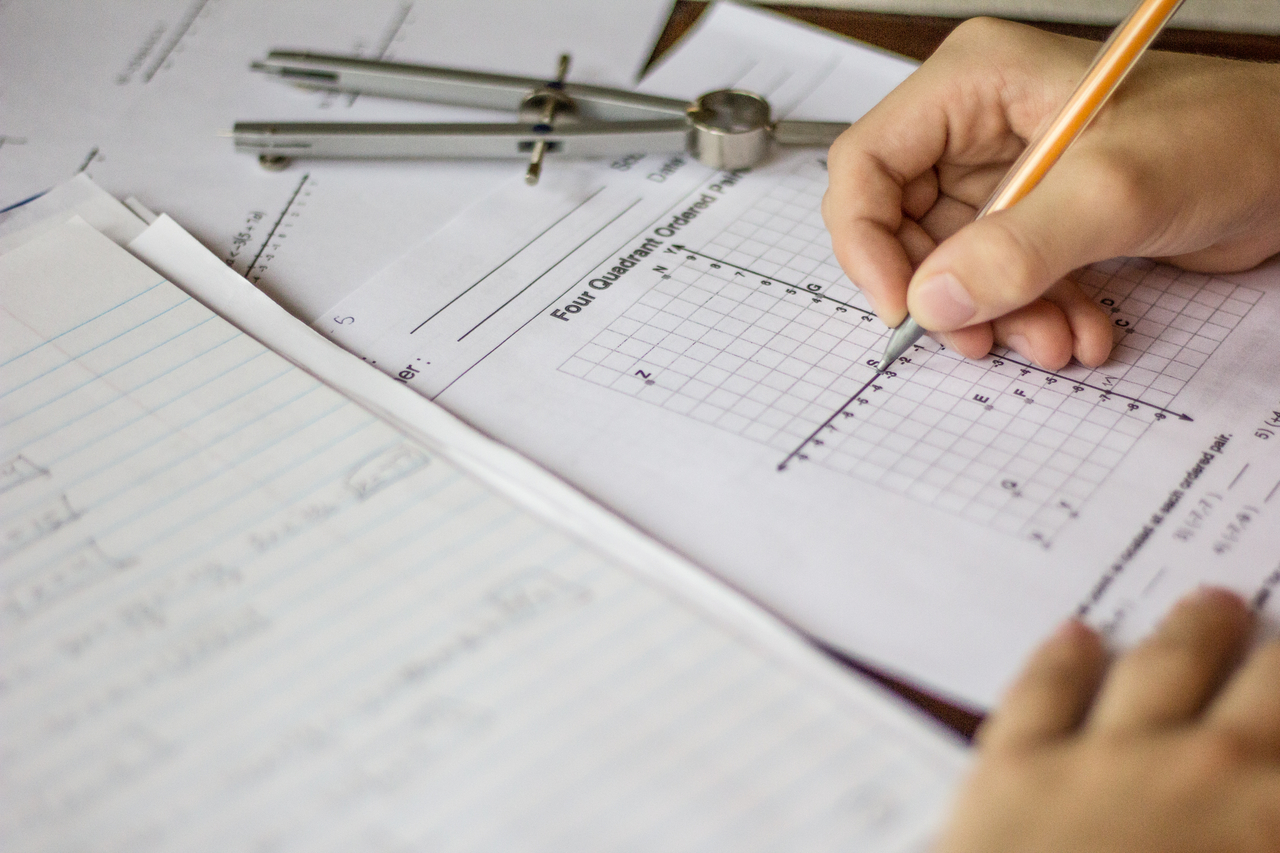 Competency covered in this module:
Competency covered in this module: - Vectors - vector addition and subtraction and the right-hand rule (knowledge of dot and cross products is not required).
-
Module 7: Lesson 1: Vectors and Scalars
Student Learning Outcomes:
Upon completion of this lesson, you will be able to:
- Distinguish between vector and scalar quantities.
- Identify the standard form or position vector.
- Identify the different types of vectors.
- Identify displacement vectors.
- Determine vector equality graphically.
- -Given an initial and a terminal point, find the position vector represented.
- Find the magnitude of a two-dimensional vector.
- Find the direction of a two-dimensional vector.
- Use the position vectors to determine vector equality.
Approximate time required for the readings for this lesson (at 144 words/minute): 5 hours and 41 minutes.
Click here to start this lesson5 URLs, 1 Forum -
Module 7: Lesson 2: Operations on Vectors
Student Learning Outcomes:
Upon completion of this lesson, you will be able to:
- Perform vector addition, subtraction using the graphical method.
- Perform vector addition and subtraction using the analytic method.
- Using vector addition and scalar multiplication to find a new vector.
- Find the magnitude and direction of a resultant vector analytically.
- Find the component form of a vector.
- Find the unit vector.
- Write a vector whose magnitude and direction are given, in terms of the unit vectors.
- Apply what we learned about vectors to a real world problem.
Approximate time required for the readings for this lesson (at 144 words/minute): 7 hours and 20 minutes.
3 URLs, 1 Forum -
Module 7: Lesson 3: Introduction to Vectors in Three-Dimensional Space
Student Learning Outcomes:
Upon completion of this lesson, you will be able to:
- Locate points in the three-dimensional octant.
- Use the right-hand rule to arrange the axes of a three-dimensional system.
- Locate, and find the distance between two points in space.
Approximate time required for the readings for this lesson (at 144 words/minute): 2 hours and 26 minutes.
Click here to start this lesson1 URL, 1 Quiz -
Course and Self Evaluation & Certificate
 In this section, you can provide feedback about this course to help us make NextGenU.org better. Once evaluations are completed, you will be able to download your certificate of completion.
In this section, you can provide feedback about this course to help us make NextGenU.org better. Once evaluations are completed, you will be able to download your certificate of completion.


